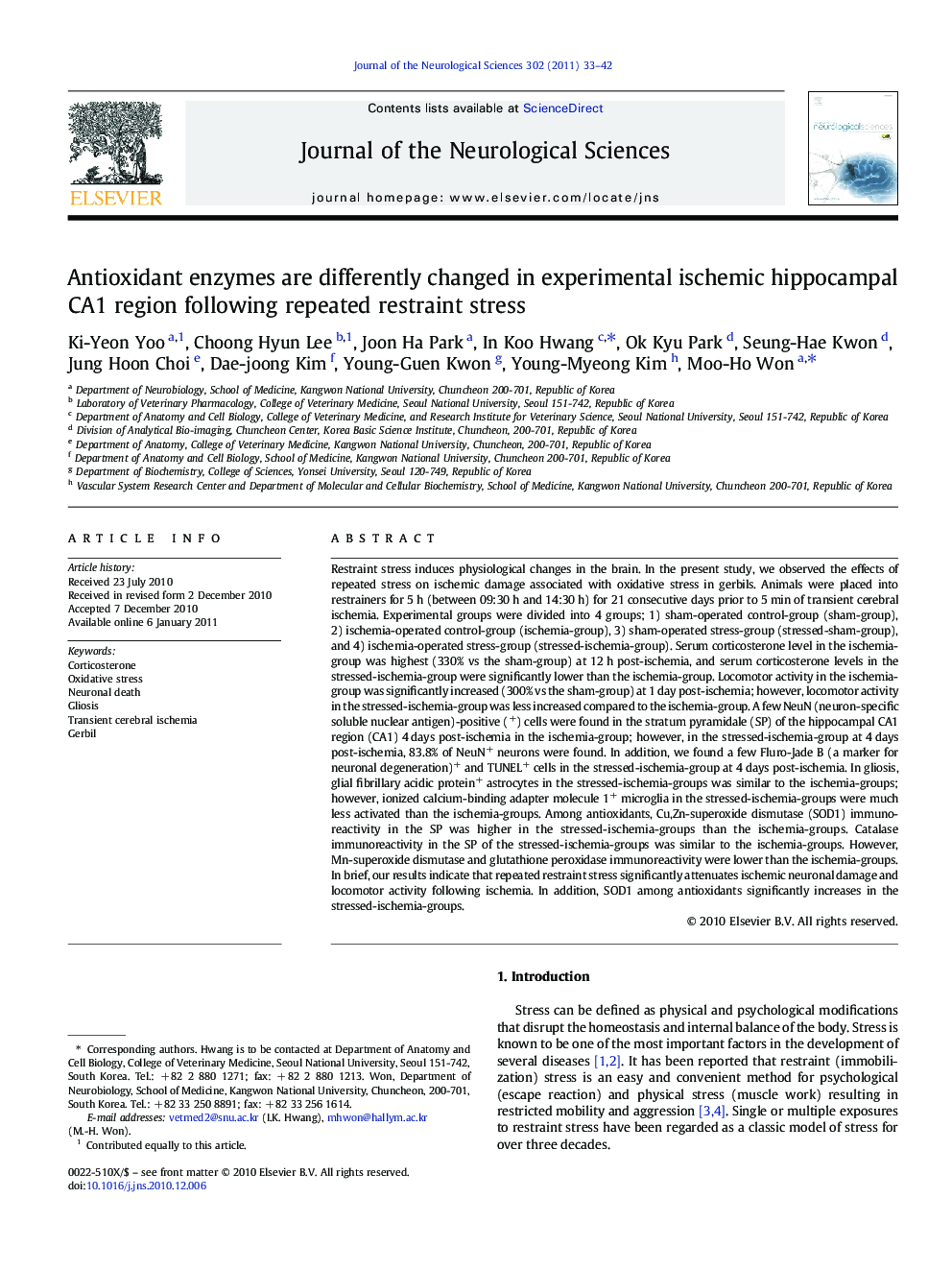| کد مقاله | کد نشریه | سال انتشار | مقاله انگلیسی | نسخه تمام متن |
|---|---|---|---|---|
| 1914266 | 1535160 | 2011 | 10 صفحه PDF | دانلود رایگان |

Restraint stress induces physiological changes in the brain. In the present study, we observed the effects of repeated stress on ischemic damage associated with oxidative stress in gerbils. Animals were placed into restrainers for 5 h (between 09:30 h and 14:30 h) for 21 consecutive days prior to 5 min of transient cerebral ischemia. Experimental groups were divided into 4 groups; 1) sham-operated control-group (sham-group), 2) ischemia-operated control-group (ischemia-group), 3) sham-operated stress-group (stressed-sham-group), and 4) ischemia-operated stress-group (stressed-ischemia-group). Serum corticosterone level in the ischemia-group was highest (330% vs the sham-group) at 12 h post-ischemia, and serum corticosterone levels in the stressed-ischemia-group were significantly lower than the ischemia-group. Locomotor activity in the ischemia-group was significantly increased (300% vs the sham-group) at 1 day post-ischemia; however, locomotor activity in the stressed-ischemia-group was less increased compared to the ischemia-group. A few NeuN (neuron-specific soluble nuclear antigen)-positive (+) cells were found in the stratum pyramidale (SP) of the hippocampal CA1 region (CA1) 4 days post-ischemia in the ischemia-group; however, in the stressed-ischemia-group at 4 days post-ischemia, 83.8% of NeuN+ neurons were found. In addition, we found a few Fluro-Jade B (a marker for neuronal degeneration)+ and TUNEL+ cells in the stressed-ischemia-group at 4 days post-ischemia. In gliosis, glial fibrillary acidic protein+ astrocytes in the stressed-ischemia-groups was similar to the ischemia-groups; however, ionized calcium-binding adapter molecule 1+ microglia in the stressed-ischemia-groups were much less activated than the ischemia-groups. Among antioxidants, Cu,Zn-superoxide dismutase (SOD1) immunoreactivity in the SP was higher in the stressed-ischemia-groups than the ischemia-groups. Catalase immunoreactivity in the SP of the stressed-ischemia-groups was similar to the ischemia-groups. However, Mn-superoxide dismutase and glutathione peroxidase immunoreactivity were lower than the ischemia-groups. In brief, our results indicate that repeated restraint stress significantly attenuates ischemic neuronal damage and locomotor activity following ischemia. In addition, SOD1 among antioxidants significantly increases in the stressed-ischemia-groups.
Journal: Journal of the Neurological Sciences - Volume 302, Issues 1–2, 15 March 2011, Pages 33–42